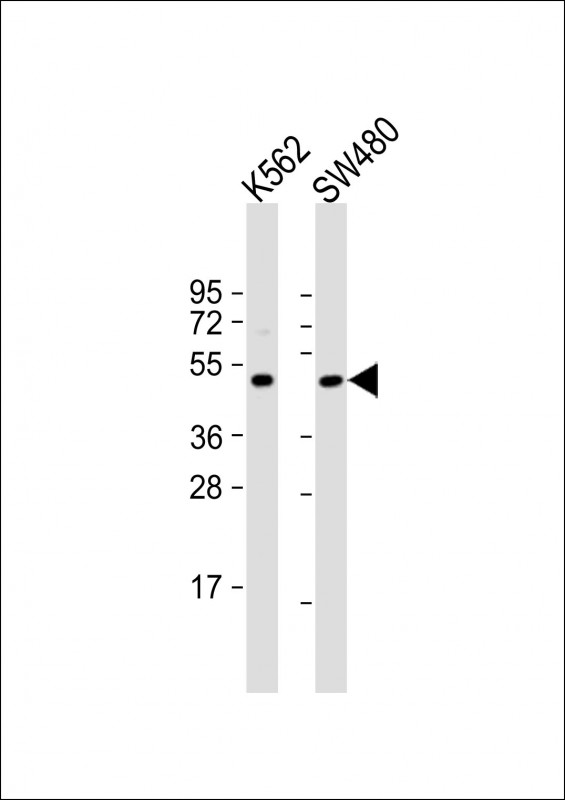Rabbit Polyclonal Antibody to STYK1 (N-term)
货号:
P33868
别名:
Tyrosine-protein kinase STYK1, Novel oncogene with kinase domain, Protein PK-unique, Serine/threonine/tyrosine kinase 1, STYK1, NOK
应用:
WB
反应种属:
Human, Mouse
抗体类型:
Primary antibody
Swissprot:
Q6J9G0
规格:
目录价
在线咨询
Description |
|---|
STYK1, a probable tyrosine protein-kinase, which has strong transforming capabilities on a variety of cell lines. When overexpressed, it can also induce tumor cell invasion as well as metastasis in distant organs. May act by activating both MAP kinase and phosphatidylinositol 3'-kinases (PI3K) pathways. It is widely expressed; highly expressed in brain, placenta and prostate. STYK1 is expressed in tumor cells such as hepatoma cells LO2, cervix carcinoma cells HeLa, ovary cancer cells Ho8910 and chronic myelogenous leukemia cells K562, but not in other tumor cells such as epidermoid carcinoma. |
Specification |
|
|---|---|
| Aliases | Tyrosine-protein kinase STYK1, Novel oncogene with kinase domain, Protein PK-unique, Serine/threonine/tyrosine kinase 1, STYK1, NOK |
| Entrez GeneID | 55359 |
| Swissprot | Q6J9G0 |
| WB Predicted band size | 47.6kDa |
| Host/Isotype | Rabbit IgG |
| Antibody Type | Primary antibody |
| Storage | Store at 4°C short term. Aliquot and store at -20°C long term. Avoid freeze/thaw cycles. |
| Species Reactivity | Human, Mouse |
| Immunogen | This STYK1 antibody is generated from rabbits immunized with a KLH conjugated synthetic peptide between 31-64 amino acids from the N-terminal region of human STYK1. |
| Formulation | Purified antibody in PBS with 0.05% sodium azide. |
Application |
|
|---|---|
| WB | 1/1000 |
Product Image
-
All lanes : Anti-STYK1 Antibody (N-term) at 1:1000 dilution Lane 1: K562 whole cell lysate Lane 2: SW480 whole cell lysate Lysates/proteins at 20 µg per lane. Secondary Goat Anti-Rabbit IgG, (H+L), Peroxidase conjugated at 1/10000 dilution. Predicted band size : 48 kDa Blocking/Dilution buffer: 5% NFDM/TBST.

-
The anti- STYK1 Pab (Cat. #P33868) is used in Western blot to detect STYK1 in 293 , CEM (center), and mouse kidney cell line/tissue lysates.






 鄂公网安备42018502007531号
鄂公网安备42018502007531号

